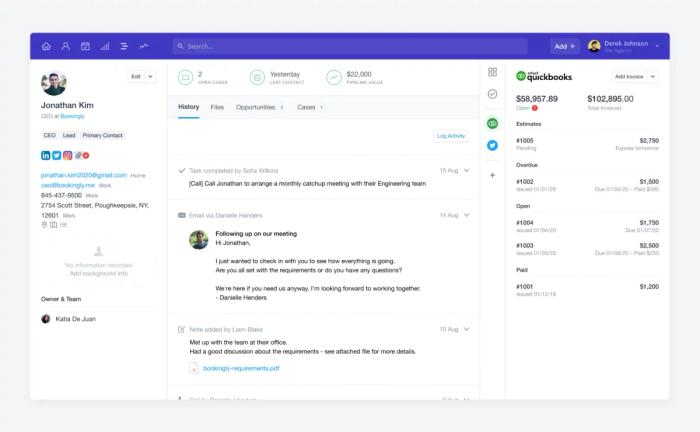Did you know that a salesperson's happiness directly influences their sales productivity? Recent studies have found a fascinating connection between a sales rep's emotional state and their ability to close deals.
While sales teams are accustomed to numbers, strategies, and metrics, too much focus on maximizing productivity can quickly burn them out.
That’s why we’ve collected 13 steps that will lead your team toward full sales productivity without sacrificing your staff's wellbeing.
What is sales productivity?
Sales productivity is all about how efficiently you use your time and resources to close deals and achieve results. It’s the key to getting more done with less so that every drop of effort counts towards the company’s success.
How to measure sales productivity?
Measuring sales productivity is like checking the health of your sales team. Think of it as a regular check that everything is running smoothly.
Look at these specific metrics to get a clear picture of how well your team is performing and where they shine or might need a little boost.
Sales cycle length

This metric shows how long it takes to close a deal, from the first hello to the final handshake. If it's taking too long, maybe there's a step in the process that could be sped up.
Revenue per sales rep

Total sales divided by the number of salespeople, giving a snapshot of how each team member is performing. A persistently low number may indicate that the team needs more training or support.
Percentage of time spent selling

Calculates the proportion of a salesperson's time spent on selling activities out of all their tasks. If a sales professional only spends 30% of their time selling, it might be worthwhile to investigate if other tasks can be streamlined or delegated.
Lead response time

The average time it takes for a sales rep to respond to a new high-quality lead. If response times lag, this might indicate the need for, e.g., better lead notification systems.
How to increase sales productivity in 13 simple steps
Follow these steps not just for a quick win but for long-term success. After all, consistency is the pillar of productivity. A structured approach is the first step toward achieving that.
1. Set clear goals to give direction
We’ve already noted the most essential sales productivity metrics. They aren't there by accident. You must have a solid strategy to measure sales performance and see where improvement is needed.
What’s the point of this? If you don't measure, you are just guessing – making predictions based on your own experience without actual data to draw conclusions from.
Once you have data (or metrics that you can use to determine deviations from the norm), it’s time to establish clear, achievable sales targets.
It’s your first step toward a change in productivity.
Goals provide direction. They’re fundamental in sales because they provide benchmarks, helping your team to remain motivated and focused on desired outcomes.
Here are some handy goal-setting tips to remember:
- Use last year's data and historical numbers to set sales goals
- Don’t forget to review and adjust targets regularly
- Look at the skills and expertise of each rep while setting sales goals (universal goals do not exist)
- Break a larger goal into smaller chunks
2. Outsource or automate repetitive tasks
Salespeople tend to work harder and smarter when they have clear targets. Clarity ensures purposeful and directed efforts, so make sure you provide it.
Repetitive sales activities can slow down even the most efficient sales reps. So why let them drain your team's energy and time?
Outsource or automate administrative tasks, there are plenty of AI tools that can help with this. Think of it as decluttering your sales process. With these tasks removed or automated, your team can focus on what they do best – selling.
For teams ready to take process automation a step further, AI-powered process optimization solutions can be used to streamline complex workflows, remove bottlenecks, and unlock higher levels of efficiency, making a tangible difference in how quickly deals move through the pipeline.
Outsourcing tasks like data entry, lead list generation, and scheduling meetings allows you to tap into specialized expertise and free your entire team from the mundane. Meanwhile, with the help of the right sales technology, sales automation can transform time-consuming tasks into seamless operations.
What are the best places to automate?

- Implement email automation tools for follow ups to ensure consistent engagement with contacts, and avoid forgotten leads.
- Integrate AI-driven chatbots on your website or sales platform, as they can handle basic inquiries and qualify leads.
- Use tools that generate sales reports automatically and give insights into performance metrics without the need for manual compilation.
- Hire specialized agencies or freelancers to conduct market research, handle administrative tasks, and create lead lists.
- Create a library of templates for sales email templates, proposals, and other frequent communications to quickly personalize messages without starting from scratch each time.
3. Implement a CRM system
A customer relationship management (CRM) system is a centralized platform designed to manage and analyze customer interactions throughout the lifecycle of the sales process. It provides a centralized platform for tracking leads, sales, and customer data.

You can't escape it – a CRM is a must-have tool for boosting sales productivity and managing details, no matter how minor. It provides sales reps with a 360-degree view of their customers and allows personalized interactions, timely follow ups, and data-driven decision-making.
CRMs don't just keep track of customer info; they improve customer relationships and maximize opportunities. For both marketing and sales teams.
To illustrate:
Think about how difficult it is to respond to every query and manage leads efficiently. If you have one or two requests a day, chances are you can handle them manually. Any more than that and you should consider a CRM.
Capsule simplifies lead management. With its advanced features, your sales team can organize customer information, track every conversation, and deliver experiences tailored to each client's unique needs effortlessly.
4. Create a shadowing program
Shadowing in sales is an excellent training tool for sales teams.
New or less experienced sales professionals can observe how sales leaders work in real-time situations. Hands-on training provides new reps with insights into customer interactions, from initial pitches to sales calls and closing deals.
Studies show that mentoring programs can increase self-confidence and job satisfaction, improving mental health and boosting productivity.
However, shadowing isn't just observation. It's understanding the know-how, sales strategy, and soft skills (empathy, adaptability, growth mindset) that make sales effective. Pairing up with a veteran helps reps learn effective communication techniques and negotiation skills.
But, like any tool, shadowing comes with its risks.
If not executed correctly, there's a possibility of persevering with outdated or ineffective sales techniques. If not in line with current best practices, the mentor's habits might be adopted by the new rep, leading to less-than-optimal results.
So, how can you make the most of a shadowing program?
- Choose the right mentors – not only top performers but also those who align with current best practices
- Set clear goals and outline what newer reps should focus on and learn
- After each shadowing session have a debrief to discuss what went well and what could be improved upon
5. Optimize the sales pipeline
Sales productivity problems can also go beyond a team. Sometimes, the reason for productivity remaining at lower levels lies at the heart of the operation.
For example, when prospects are ranked incorrectly in the sales funnel, reps spend time chasing leads that aren't ready to convert. They waste precious time and resources on those not yet at the bottom of the sales pipeline.
Regularly review and refine the sales process to ensure it's efficient. An optimized sales funnel reduces drop-offs and increases conversions. Also, it guarantees that potential clients can move seamlessly from one funnel stage to the next.
And here’s where a CRM is irreplaceable again.

Capsule enables sales executives to track the progress of high-quality leads all the way through the sales funnel. Thanks to such features as sales lead indicators, the software can quickly identify those who progress and those who are close to dropping out.
A dedicated CRM dashboard can show vital statistics, future sales projections, and the value of opportunities. All of that to optimize the sales pipeline as much as possible.
6. Create a single command center
Existing customers, sales tasks, sales meetings – navigation through all of these assets can be overwhelming and time consuming.
Without a central point of reference, navigating through this can become overwhelming. So, why not bring everything under one roof?
Set up a central command center in your sales tech stack – a unified platform where all of your sales data, tools, and resources are stored. Everyone on the team will then be able to access the same, up-to-date information, regardless of their role.
Centralized systems are driving sales productivity high. Instead of switching between different tools and sifting through numerous files, you have everything in one place. This makes processes more efficient, promotes teamwork, and maintains a consistent approach to sales.
What should your command center include?

Capsule’s centralized hub contains:
- Unified CRM system – a single platform where all customer interactions, past and present, are logged and easily accessible.
- Integrated communication tools – whether it's emails, sales calls, or meetings – a system that tracks and records all forms of customer conversations.
- Real-time analytics dashboard – a visual representation of your sales metrics to monitor performance and make data-driven decisions.
- Resource library – giving the sales team the right tools for each and every different situation.
So, if you spend more time sorting prospects than converting them into paying clients, it’s time to consider a centralized dashboard like Capsule’s.
7. Promote workplace wellness
The pressure to meet targets and perform can sometimes overshadow the importance of wellbeing.
Wellness in the workplace is not just a trend, it's a necessity if you want to sustain sales productivity and boost team morale.
Workplace wellness also goes beyond just physical health. It refers to mental, emotional, and even social wellbeing. When employees feel their best, they perform their best. A healthy team will be more engaged and motivated, as well as less likely to experience burnout.
How can you promote workplace wellness?
- Celebrate large or small victories to boost team spirits
- Encourage breaks and time off to recharge during the day and vacations to relax fully
- Offer resources or sessions on stress management and mindfulness (how about office yoga?)
- Reduce meeting durations and frequency in order to free up time for sales managers to focus on high-value activities
8. Schedule regular training
Keeping up with the latest trends is crucial to maximizing sales productivity. Ongoing sales training sessions are not merely an organizational requirement but also a strategic investment.

A well-informed salesperson can handle customer queries effectively and close more deals faster.
Regularly train your sales team on new techniques, products, and market trends.
In what ways can sales coaching boost sales productivity?
- Implement a monthly training program that covers various aspects of the sales process (they could range from product knowledge refreshers and sales strategy workshops to soft skills development sessions)
- Use a mix of in-house experts and external trainers to provide a well-rounded learning experience
- Provide training sessions that are interactive and practical
9. Streamline communication
Have you ever thought about how much time salespeople spend just waiting? Waiting for replies, updates, or that vital piece of information about the contact to move forward.
It's a common problem in many sales organizations. But imagine if your team could get what they need in an instant, whenever necessary.
Streamlined communication speeds up processes and improves a team’s productivity. It also helps prevent misunderstandings and build a supportive corporate culture.
Your team will become a sales enablement superforce, equipped with tools and insights.
What are the secrets of smooth communication in sales teams?
- Centralized information hub where all team members can access necessary information, updates, and resources in real-time.
- Regular check-ins and consistent team meetings to discuss progress, challenges, and strategies.
- Clear protocols and standard procedures for communication, such as response time expectations or preferred channels for specific information types.
- Automation tools that optimize productivity such as email marketing, CRM, and project management tools.
10. Combine the forces of marketing and sales teams
There is a pattern in most well-performing business structures. Often, two departments drive the company's growth at the forefront – the sales and marketing teams.
Their individual strengths are undeniable, but when combined they become a powerhouse for improving sales productivity. This can clearly be a win-win but it's only effective when both teams collaborate and communicate seamlessly.
Experts from the Forbes Agency Council say the solution lies in understanding the overlapping of their roles. Both teams play an integral role in the customer journey, from building brand awareness and interest to finally generating revenue.
Sales and marketing alignment begins with recognizing this interdependence.
For example, sales can provide valuable insights into customer pain points that marketing teams can then use to craft compelling narratives. Meanwhile, marketing's efforts to build brand awareness paves the way for sales to close more deals. It’s easier to sell to someone who’s already familiar with a brand.
11. Organize team-building activities
Sales can be a high-pressure environment, and the constant drive to achieve targets can sometimes create invisible barriers between team members. They're like silent gaps in a conversation that need bridging.
Why let these gaps widen? Initiate regular activities to build a sense of teamwork.
Promoting a culture of collaboration and insight-sharing allows your team to relax and connect. This helps them forget about the work pressures out of the office and unwind.
Why is this essential? Because, as publications say, diverse minds create a productive work environment. It’s a booster for sales teams’ effectiveness, leading to innovative solutions that a single mind might overlook.
Here are some ideas for team-building activities that boost productivity:
- Have team members swap roles for a day or a few hours to help them understand the challenges faced by their colleagues in order to foster empathy and better collaboration.
- Organize productivity workshops during which team members can learn about and discuss time management techniques, task prioritization, and other productivity tools.
- Set a challenge or problem and conduct a brainstorming session to stimulate creativity and encourage collaborative problem-solving.
- Activities like hiking, rafting, and obstacle courses can help teams bond while also teaching them the importance of teamwork.
12. Seek feedback and act upon it
The feedback loop doesn’t just apply to customers. In sales, every voice matters. Take advantage of the various opinions that your members have to offer.
Develop a culture of feedback. The goal is to fine-tune your sales strategy. If you actively seek and act on feedback (both from customers and team members), you can identify gaps, optimize processes, and improve the overall sales experience.
For example, customers might provide feedback on your product, pricing, or even the effectiveness of your sales pitch. Team members on the other hand, can offer insights into what's working, what's not, and where there might be room for improvement.
So, where should you focus your feedback efforts?
- After a sale, send out short surveys to customers – their fresh perspective on the buying process can offer actionable insights.
- Hold frequent feedback sessions with your sales team to highlight areas for process improvement or training needs.
- Sometimes, an external perspective can spot things you might miss – consider periodic reviews by sales consultants or experts.
13. Design a reusable sales process
Every sales organization has its unique rhythm. You must have a standardized yet flexible sales process if you are to keep up with these dynamics.
You should not aim to create a one-size-fits-all method, but rather establish a framework that can be tailored to individual circumstances and needs.
A sales process that can be replicated throughout the team and scaled as the company grows is an ideal. When each sales agent follows a proven process, it increases the chances of consistent success. What’s more, it allows for the seamless onboarding of new team members and leads to faster sales cycles.
Here are the key characteristics of a scalable sales process.
- Flexibility – the process can adapt to changing market conditions, new product launches, or shifts in target demographics.
- Standardization – while allowing for individual flair, there are standardized procedures and best practices that ensure consistency across the team.
- Measurability – the process includes clear metrics and KPIs that allow for performance tracking.
- Clarity – each stage of the sales process is clearly defined, so all team members understand their roles and responsibilities.
- Alignment with company goals – the sales process is in sync with broader company objectives.
- Future proofed – the process is designed with an eye on emerging trends and shifts in the sales landscape.
Ready for a level-up in sales productivity?
Our roadmap leads us to one conclusion: sales efficiency and happy sales organization are the names of the game. Looking for a place to start? Kick things off by integrating powerful sales productivity tools that can make all the difference.
If you're looking for a trusted partner to improve your sales productivity, consider Capsule CRM. Designed to be your sales team's best friend, it streamlines building strong customer relationships and prevents lapses.
Curious to see it in action? No hidden clauses, no complications, just pure sales empowerment. Try Capsule CRM free for 14 days.




